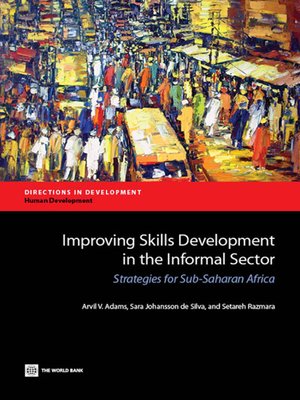Improving Skills Development in the Informal Sector
ebook ∣ Strategies for Sub-Saharan Africa · Directions in Development
By Arvil V. Adams

Sign up to save your library
With an OverDrive account, you can save your favorite libraries for at-a-glance information about availability. Find out more about OverDrive accounts.
Find this title in Libby, the library reading app by OverDrive.



Search for a digital library with this title
Title found at these libraries:
| Library Name | Distance |
|---|---|
| Loading... |
Sub-Saharan Africa has millions of nonfarm workers engaged in small and household enterprises outside
formal wage employment, constituting the informal sector. Previously seen as a pool of surplus labor
expected to be absorbed by future industrialization, this sector has instead become a persistent feature of
the regionâs economic landscape, and accounts for a majority of new jobs created off the farm. Expanding the sector's potential as a source of employment for the region's growing workforce and
improving its productivity and earnings are priorities for poverty reduction. This book examines the role
played by education and skills development in serving these priorities. Improving Skills Development in the Informal Sector: Strategies for Sub-Saharan Africa looks at how formal
education, technical and vocational education and training, apprenticeships, and on-the-job learning shape
employment and earnings in the informal sector in five African countries. These countries-Ghana, Kenya,
Nigeria, Rwanda, and Tanzania-together account for one-third of Sub-Saharan Africaâs population of nearly
900 million, and of the nearly 36 million nonfarm workers in those five countries, 7 out of 10 work in the
informal sector. The importance of this book is its quantitative assessment, using household surveys, of the relationship of
different sources of skills development to the sector in which one works and to oneâs earnings. The book
also examines a set of economic constraints to skills development and offers an insightful approach to
improving employment outcomes, including examples of successful interventions taken from the five
countries and elsewhere.







